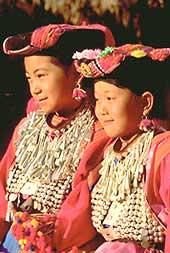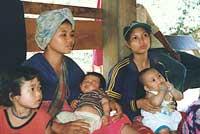Culture conditions genetic diversity

He has studied the mountain tribes of Thailand (those of the mountains separating Thailand, Laos and Myanmar). In three of these tribes, after marriage, it is a man who is going to live the woman's people and in three others it is a woman who goes to the man's people. Moreover, they have a similar agricultural life, have a similar climate and have a language of the same group.
People tend to think that genetic changes are a consequence of a long evolution, but, according to Mark, his work shows that cultural changes affect genetic diversity. Each sex has its own genetic characteristics. The history of the females is collected in the DNA of the mitochondria that is only transmitted from mother to daughter. The male line is written on the Y chromosome.
In men within groups where men do not move, the Y chromosome is very similar, and female DNA is a reflection of their diversity of origin. At the same time, the incorporation of women into marriage seems to homogenize mitochondrial DNA between groups; as for chromosome Y, there are group to group changes due to the lack of flow between groups. It is totally inverse in the tribes where men move to marry.

So far, studies of ethnic groups have been questioned in which the Y chromosome was more versatile than mitochondrial DNA; comparisons were said to be made in different gene lines. In addition, there are many differences between Y chromosomes and mitochondrial chromosomes (mutation rate, among others). Now, however, the authors of this study have investigated the same conditions and lines of DNA and what changes is culture. However, the impact of the environment on human cultures is still unknown. That is, in this case, why in some tribes women and in others men move.
Buletina
Bidali zure helbide elektronikoa eta jaso asteroko buletina zure sarrera-ontzian











